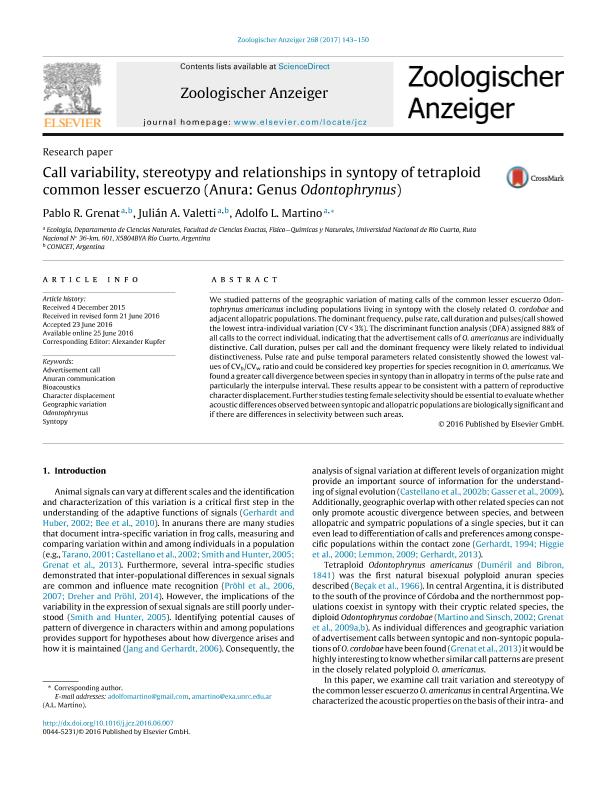Artículo
Call variability, stereotypy and relationships in syntopy of tetraploid common lesser escuerzo (Anura: Genus Odontophrynus)
Fecha de publicación:
05/2017
Editorial:
Elsevier Gmbh
Revista:
Zoologischer Anzeiger
ISSN:
0044-5231
e-ISSN:
1851-7617
Idioma:
Inglés
Tipo de recurso:
Artículo publicado
Clasificación temática:
Resumen
We studied patterns of the geographic variation of mating calls of the common lesser escuerzo Odontophrynus americanus including populations living in syntopy with the closely related O. cordobae and adjacent allopatric populations. The dominant frequency, pulse rate, call duration and pulses/call showed the lowest intra-individual variation (CV < 3%). The discriminant function analysis (DFA) assigned 88% of all calls to the correct individual, indicating that the advertisement calls of O. americanus are individually distinctive. Call duration, pulses per call and the dominant frequency were likely related to individual distinctiveness. Pulse rate and pulse temporal parameters related consistently showed the lowest values of CV b /CV w ratio and could be considered key properties for species recognition in O. americanus. We found a greater call divergence between species in syntopy than in allopatry in terms of the pulse rate and particularly the interpulse interval. These results appear to be consistent with a pattern of reproductive character displacement. Further studies testing female selectivity should be essential to evaluate whether acoustic differences observed between syntopic and allopatric populations are biologically significant and if there are differences in selectivity between such areas.
Archivos asociados
Licencia
Identificadores
Colecciones
Articulos(CCT - CORDOBA)
Articulos de CTRO.CIENTIFICO TECNOL.CONICET - CORDOBA
Articulos de CTRO.CIENTIFICO TECNOL.CONICET - CORDOBA
Citación
Grenat, Pablo Raúl; Valetti, Julian Alonso; Martino, Adolfo Ludovico; Call variability, stereotypy and relationships in syntopy of tetraploid common lesser escuerzo (Anura: Genus Odontophrynus); Elsevier Gmbh; Zoologischer Anzeiger; 268; 5-2017; 143-150
Compartir
Altmétricas




